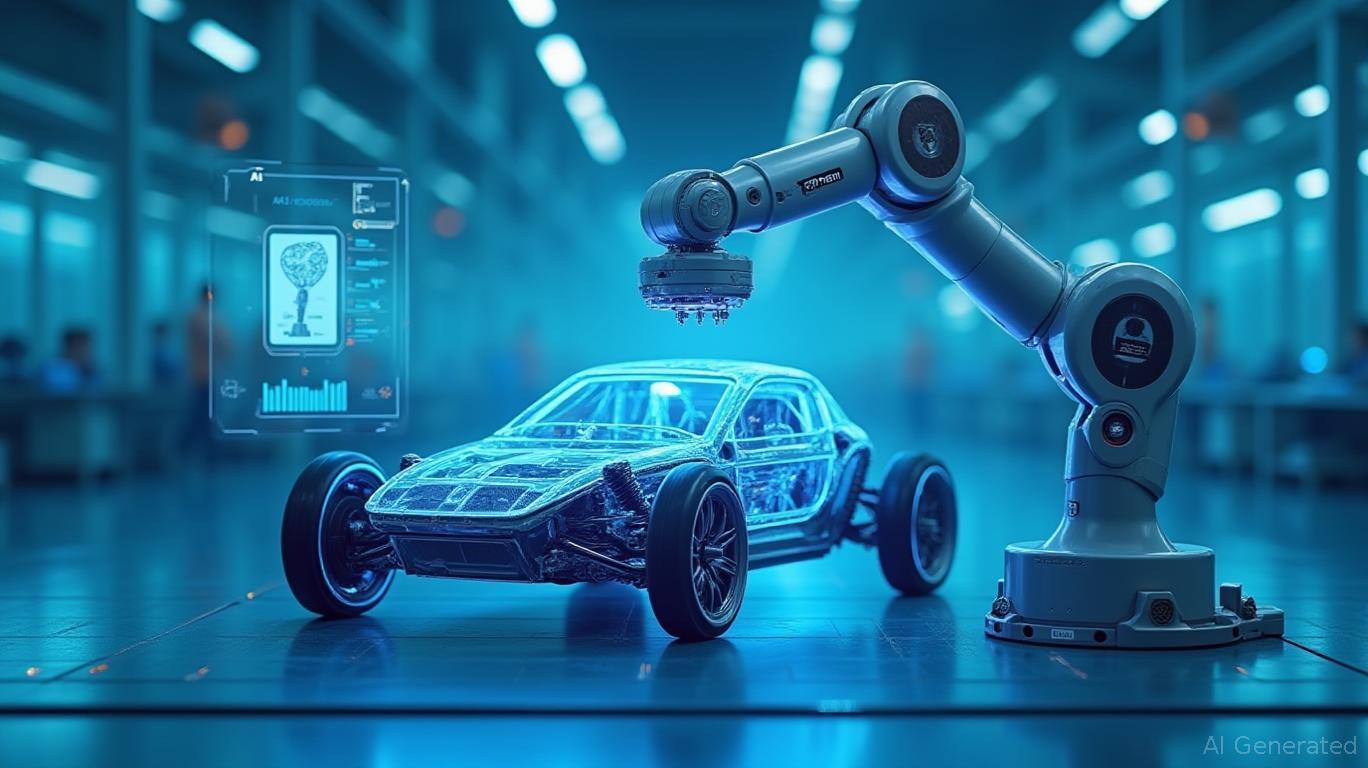TPGen: Revolutionizing Industrial Automation with AI-Driven Robotics
The manufacturing sector is on the cusp of a transformation, and Grid Dynamics' newly unveiled TPGen robotic inspection solution is poised to be its catalyst. Set to debut at Automatica 2025, TPGen promises to disrupt traditional industrial automation workflows by leveraging AI to slash programming time, reduce costs, and enhance precision. For investors, this innovation represents a compelling opportunity to capitalize on the convergence of robotics and generative AI—a trend set to reshape global manufacturing competitiveness.
The TPGen Breakthrough: Automation at Lightning Speed
Traditional robotic inspection workflows are plagued by bottlenecks: programming complex tool-paths for tasks like welding or surface analysis often takes weeks, requiring specialized engineers and iterative trial-and-error. TPGen eliminates this inefficiency by automating the process entirely. By ingesting CAD models, the solution generates optimized tool-paths in minutes, performs real-time feasibility analysis, and integrates with virtually any robotic hardware—a feat made possible through its collaboration with Wandelbots' NOVA platform.

The implications are profound. Manufacturers can now deploy robotic systems in days rather than months, reducing downtime, minimizing energy waste, and improving quality control. For industries like automotive, aerospace, and heavy equipment, where precision and speed are critical, TPGen's cycle time reduction and real-time process optimization could redefine operational efficiency.
Cost Savings: A Numbers Game
The cost-saving claims are not hyperbole.
estimates that TPGen reduces programming and setup time by orders of magnitude, cutting labor costs and accelerating time-to-market. For example:- Time Savings: Programming complex geometries, which once took weeks, now takes minutes.
- Energy Efficiency: Smart path optimization slashes power consumption, lowering operational expenses.
- Scalability: Hardware-agnostic integration means manufacturers can use existing robotic arms, avoiding costly hardware overhauls.
While GDYN's stock has shown volatility, its recent partnerships and product launches (e.g., TPGen) suggest a trajectory of innovation. Investors should monitor near-term catalysts, such as adoption rates post-Automatica 2025 and revenue contributions from TPGen.
Historically, this pattern has been supported by strong performance following past Automatica events. From 2018 to 2024, buying GDYN five days before these conferences and holding for 30 days delivered a compound annual growth rate (CAGR) of 160.49%, with an excess return of 240.94%. However, this strategy also faced a maximum drawdown of -83.84%, highlighting its high-risk profile. This underscores GDYN's potential as a catalyst-driven stock, where near-term events like Automatica can amplify returns—but also necessitate careful risk management.
Risks and Market Challenges
Grid Dynamics is not without hurdles. The manufacturing sector's adoption of new technologies can be slow due to legacy systems and capital constraints. Competitors like ABB Robotics and KUKA are also advancing AI-driven automation, intensifying competition. Regulatory scrutiny and the need for robust cybersecurity frameworks—critical for industrial IoT systems—are additional risks.
However, TPGen's first-mover advantage and scalable platform (via the NOVA collaboration) position Grid Dynamics to carve out a dominant niche. Early adopters in sectors like automotive (e.g., Tesla, Ford) or aerospace (Boeing, Airbus) could validate the solution's ROI, creating a ripple effect across the industry.
Investment Thesis: GDYN as a Growth Play in Automation
For investors, GDYN presents a compelling growth opportunity in the $300 billion industrial automation market, projected to grow at a 6.5% CAGR through 2030. TPGen's disruptive potential aligns with megatrends:
1. AI Democratization: Lowering the technical barriers for robotic programming.
2. ESG Compliance: Reducing energy use and waste meets ESG-driven demand.
3. Global Manufacturing Resurgence: Post-pandemic reshoring and automation investments favor solutions like TPGen.
While GDYN's valuation may appear high relative to peers (e.g., FANU or RBLX), its focus on enterprise AI and smart manufacturing—backed by proven client wins—justifies a premium. The Automatica 2025 showcase is a pivotal moment; strong partnerships or orders from high-profile manufacturers could trigger a re-rating.
Final Thoughts: A Paradigm Shift in Motion
TPGen is more than a product—it's a paradigm shift. By automating robotic workflows through AI, Grid Dynamics is tackling one of manufacturing's oldest inefficiencies. For investors, the question isn't whether automation will dominate the factory floor, but who will lead it. GDYN's blend of innovation and execution makes it a frontrunner.
Investment Recommendation: Consider a long position in GDYN with a 12–18 month horizon, paired with close monitoring of post-Automatica adoption metrics. For risk mitigation, pair GDYN with broader robotics ETFs like ROBO or CIBR to capture sector-wide momentum.
The future of manufacturing is faster, smarter, and more efficient—and TPGen is writing its blueprint.

Comments
No comments yet